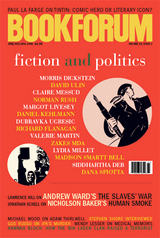
Rachel Kushner’s first novel is a work of great care and research, directed at re-creating a place that history has erased from the map. Telex from Cuba is set, for the most part, in Oriente province during the six years prior to Castro’s overthrow of Batista. These were the very last years that United Fruit owned “Cuba’s largest, poorest, blackest province,” as one of the novel’s scions describes his former home, and that Americans lived there in a state of fantastic excess. The expatriates and revolutionaries whom Kushner follows over the course of her story represent both this privileged class and those who made their lifestyle finally impossible.
With impressive fluency, Kushner speaks in the voices of a series of latter-day colonialists. K. C. Stites, the fortunate son of the head of United Fruit’s Cuba Division, recalls the end of his childhood from retirement in Tampa, Florida. Everly Lederer, the slightly less privileged, precocious daughter of a nickel-plant manager, observes the years before the revolution as they happen. At a distance from K. C. and Everly’s memories and impressions of Oriente, an arms dealer with a Nazi past and a showgirl of possibly Jewish origins engage in romance and conduct negotiations that help determine the fate of the country.
Kushner really sinks into her material, devising detailed imagery of the lush surroundings of her child characters. K. C. and Everly grew up in an extravagant suburbia displaced to the tropics, and each evokes Oriente with a dreaminess that adds gloss to the portrait of the place. K. C., who considers his life retrospectively, suffuses his stories with nostalgia. He recalls his powerful father as an impeccable dresser, noting that “Daddy wore a white duck suit every day, perfectly creased, the bejesus starched out of it.” Everly, observing events as they occur, often immerses herself in sensory impressions and associations. When she hears that Cuba is “the world’s sugar bowl,” she imagines “a pink crystal bowl, beveled on the edges and filled with glinting white sugar.”
K. C. and Everly’s close observations are the novel’s most straightforward parts. A second aspect exists almost out of time and place, approaching the territory of metafiction. The showgirl, suggestively named Rachel K, and her lover, arms dealer La Mazière, see each other on and off over the course of the story’s six years, but their encounters contain little description of Havana. Instead, the pair rather ruthlessly direct the novel’s action, as they seduce each other, travel between Prio, Batista, and Castro, and quietly help set the revolution in motion. La Mazière wonders if Rachel’s story will become “a simple morality tale, ‘cabaret dancer meets tragic end,’” and whether she will succumb to that fate by book’s end becomes the novel’s one true drama. Kushner is adept at profound description and real suspense, but the two qualities intersect too rarely in this story of a divided island.
